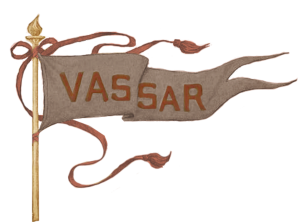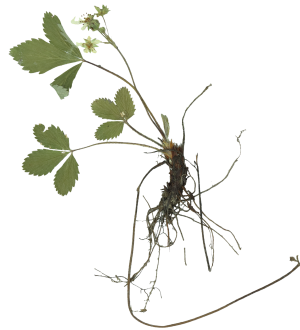1878 - 1955
Louise Fargo Brown was born in Buffalo, New York of
pioneer stock. Early Browns had helped to extend the
frontiers along the Mohawk and the Ohio, and Fargos
were among the ‘49ers pushing westward to California.
These deeds were long since done. But the s irit in
which they were done and the qualities leading to
their accomplishment, - a lively curiosity, love of
the new venture, generosity, a zest for life itself,
great good humor and warmth of spirit - were the rich
legacy bequeathed to Louise Fargo Brown. Throughout
her life she remained something of the pioneer, with
a keen awareness that every generation has its own
frontiers to extend, whether of the mind or space.
She received her early schooling in the Buffalo schools
and her B.A. degree from Cornell University in 1903.
In 1905, she entered the graduate school at Cornell
and long before Fulbrights and Fords and Guggenheims
had made the privilege of foreign study almost a
comonplace, Cornell twice awarded Miss Brown its
Andrew White Travelling Fellowship. This gave her two
wonderful years in Europe, the first at London and
Oxford, the second in Basle, Zurich and Geneva. An
article based on the research of these years appeared
in the En lish Historiggl Review while she was yet a
graduate student?‘ §he receTtéd_the Ph.D. from Cornell
in 1909, and except for a spring semester at Vassar in
1915, was instructor in history at Wellesley from 1909
to 1915. During this period she completed her first
book, The Political Activities of the Baptists and
Fifth Monarchy in England During the Interregnum,
a book which received the Herbert Baxter Adams Prize
from the American Historical Association for the best
monograph of the year in Modern European History.
In 1915 Miss Brown was offered the post of Dean of
Women and professor of History at the University of
Nevada. She was at this post when America entered
World War I in the spring of 1917. Browns, Towers,
and Fargos had served their country in earlier wars.
Louise Fargo Brown volunteered; and from 1917 to 1919
was detailed to do historical work in Washington. Her
pamphlet on The Freedom of the Seas was sent in MS
for use at the Paris Peace'Uonference. It delighted
her sense of humor that in return for her services as
LOUISE FARGO BROWN (Continued)
historian the United States government had conferred
upon her the rank of sergeant in the Marines. To the
delight of her colleagues on the Vassar bridle path,
the sergeant's uniform became the bistorian's riding
In Miss Brown, during the semester at Vassar in 1915,
Lucy Maynard Salmon had seen seething of her own
pioneering spirit in history teaching. Hence she was
recalled to Vassar in 1919 to begin the years of ser-
vice which lasted until her retirement in l9hh. Here
she became a lively and spirited member of the college
community. She was always a champion of the underdog,
and a rugged fighter for the causes in which she be-
lieved. At one point she even entered Dutchess County
politics and ran for County Court clerk. Some of her
colleagues still remember her star role in a Founder's
Day program on "Matthew Vassar's Times". During these
years she published two additional books, The First
Earl of Shaftsbu in 1933, under the auspices 0? tEe
Kmerican Historical Association, and A ostle of
Democracy, the life of Lucy Maynard Sa§Eon, in l9U3.
er wor in England was recognized in her election
as Fellow of the Royal Historical Society. In 1930
she was co-founder of the Berkshire Historical Con-
ference, still a thriving organization of women
historians.
The course at Vassar for which alumnae best remember
Miss Brown bore the suggestive title, "The History of
Tolerance". To some students it was the most pro-
vocative course they had at Vassar. Her interests and
activities did not end with retirement. In l9h8, in
collaboration with George B. Carson she published a
European history text, Men and Centuries of European
Civilization, a new approach in textbooks.
Miss Brown's recent years were spent in Norfolk,
Virginia. That one was past seventy need not keep one
from exploring and enjoying this new region. She at
once identified herself with the local historians and
became custodian of their local archives. But as much
as she loved the past, she could drop old MSS at a
moment's notice to engage in a social or political
struggle. Hence, when the scourge of McCarthyism
LOUISE FARGO BROWN (Continued)
ravaged the land, the old warhorse entered the lists
again. Vassar Alumnae who saw the dejected figure
of Titus Oates in stocks on the cover of The Nation
for April, 1954 could not have been too greatly sur-
prised to discover that the author of the article,
“Portrait of an Informer; a Seventeenth Century Moral"
was their old teacher of the "History of Tolerance".
Those of us who came as young instructors during her
term at Vassar remember gratefully her kindness and
friendliness during our years of initiation. All of
her colleagues respected her integrity and her
courage and found Vassar a less colorful community
when she was no longer here.
Respectfully submitted,
Josephine Gleason
Emily Brow:
Mildred Campbell
XIV - 70-71

